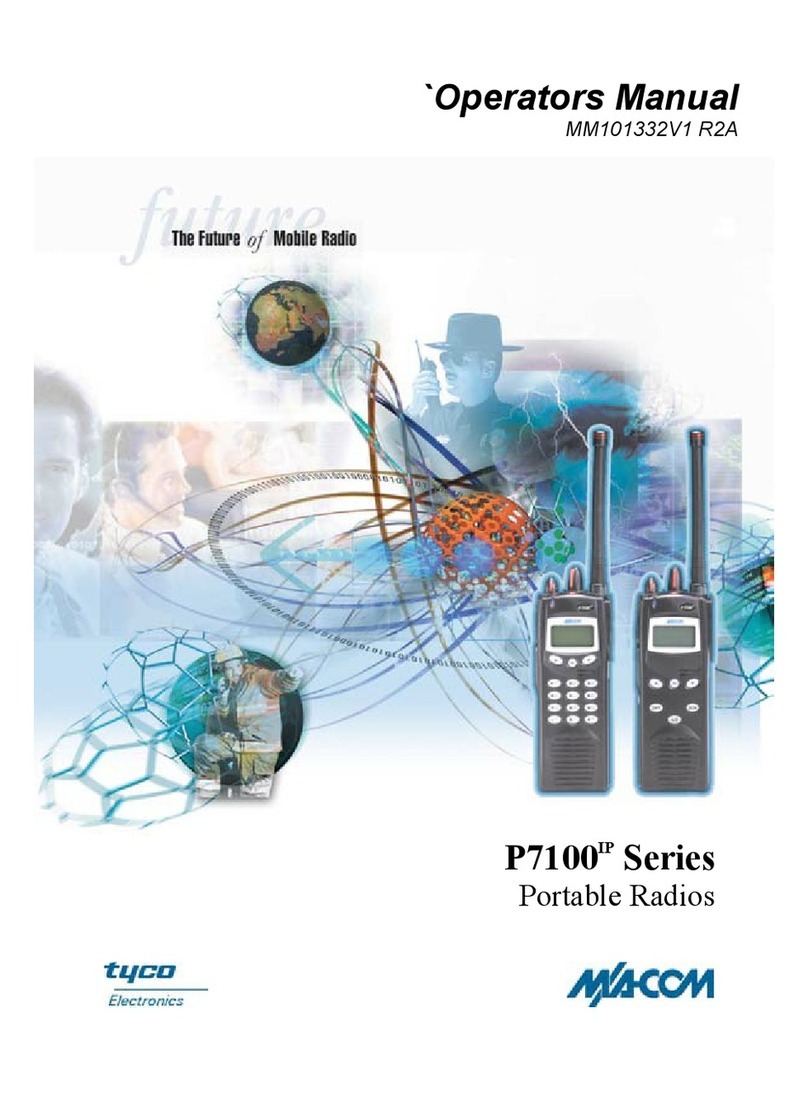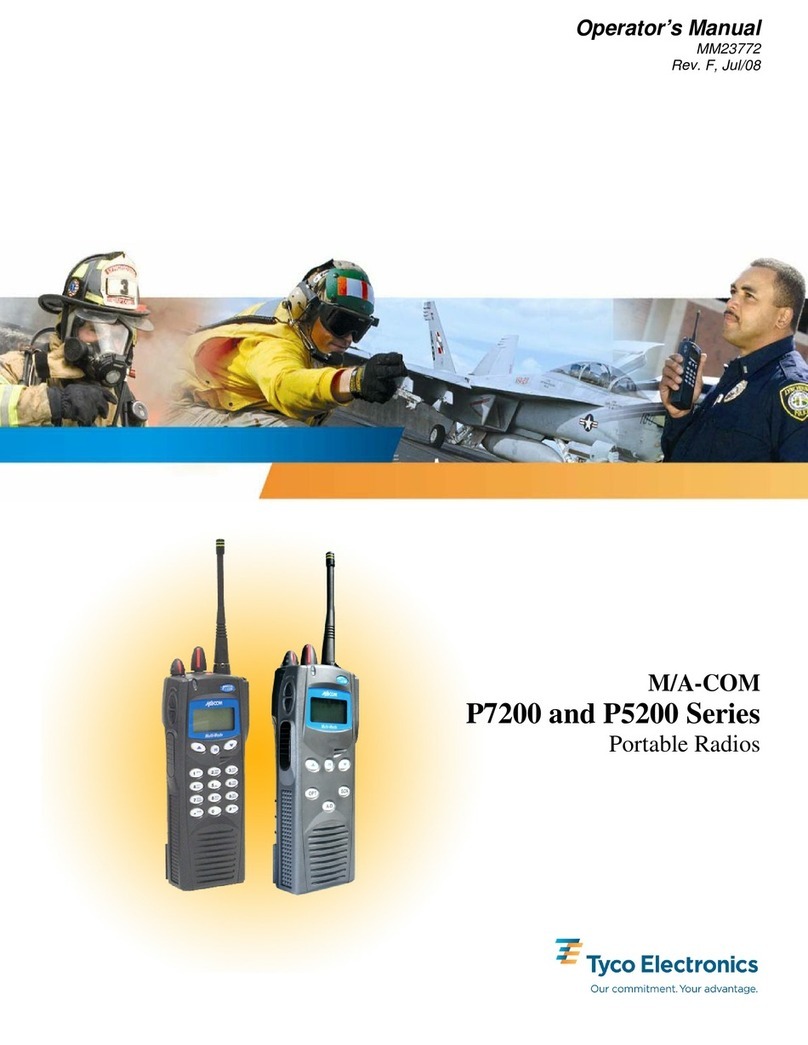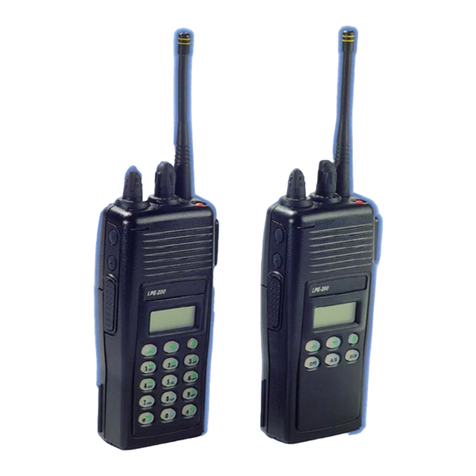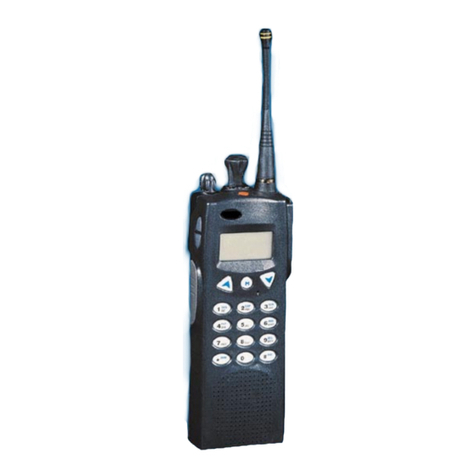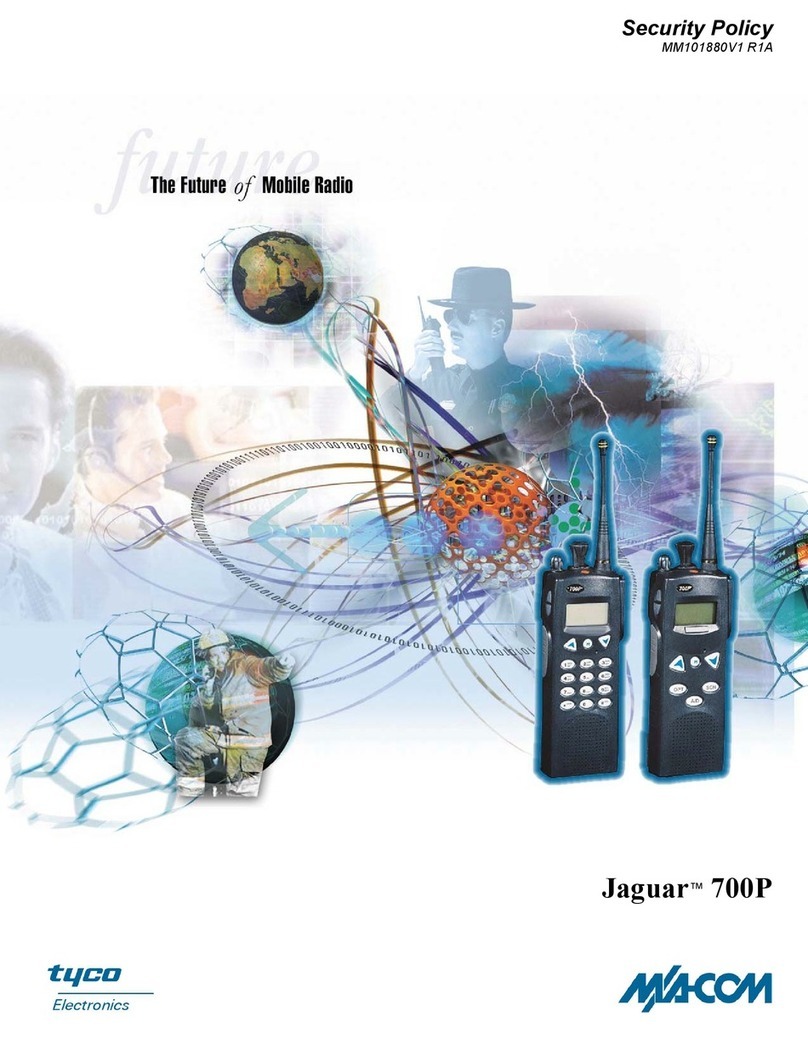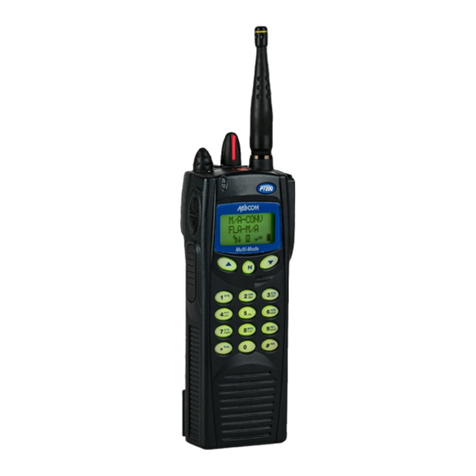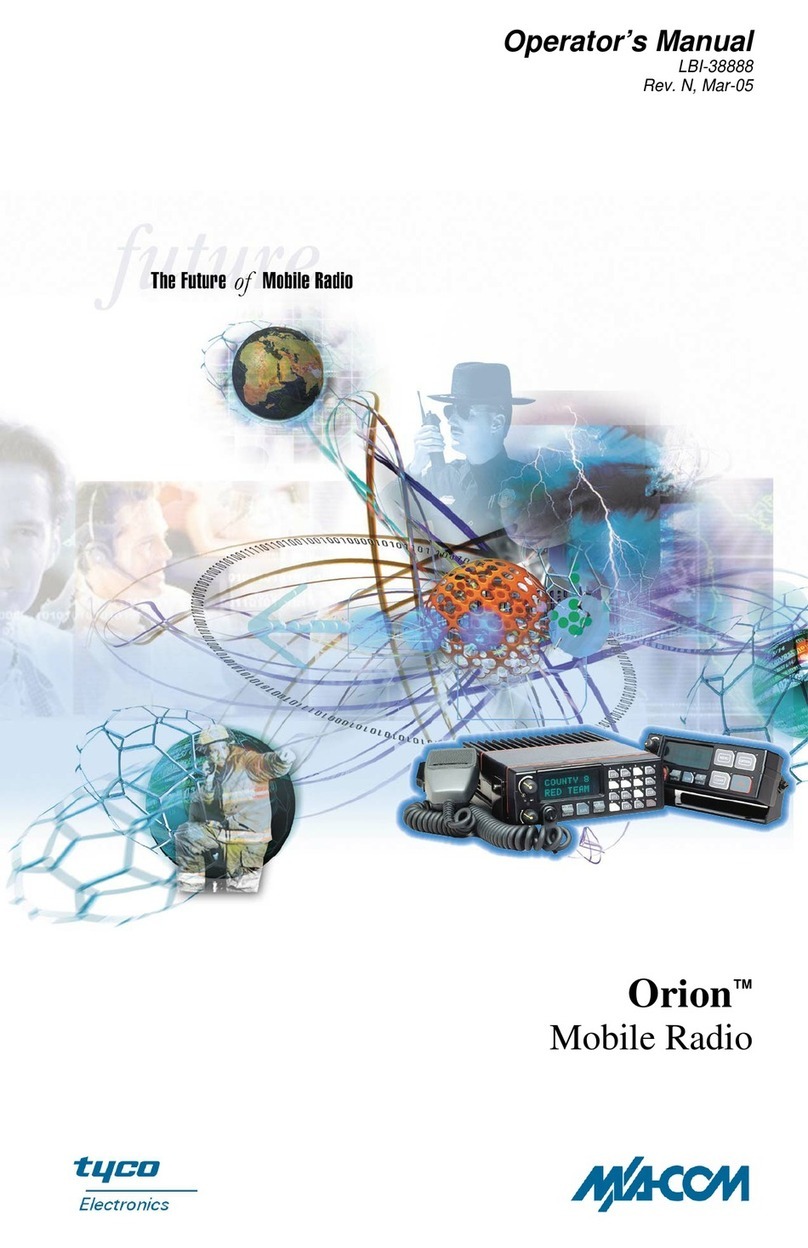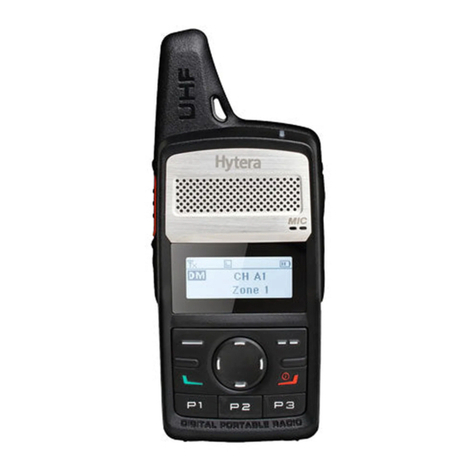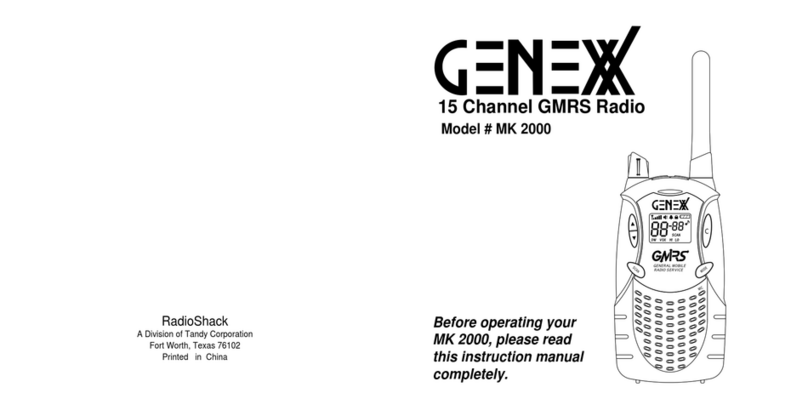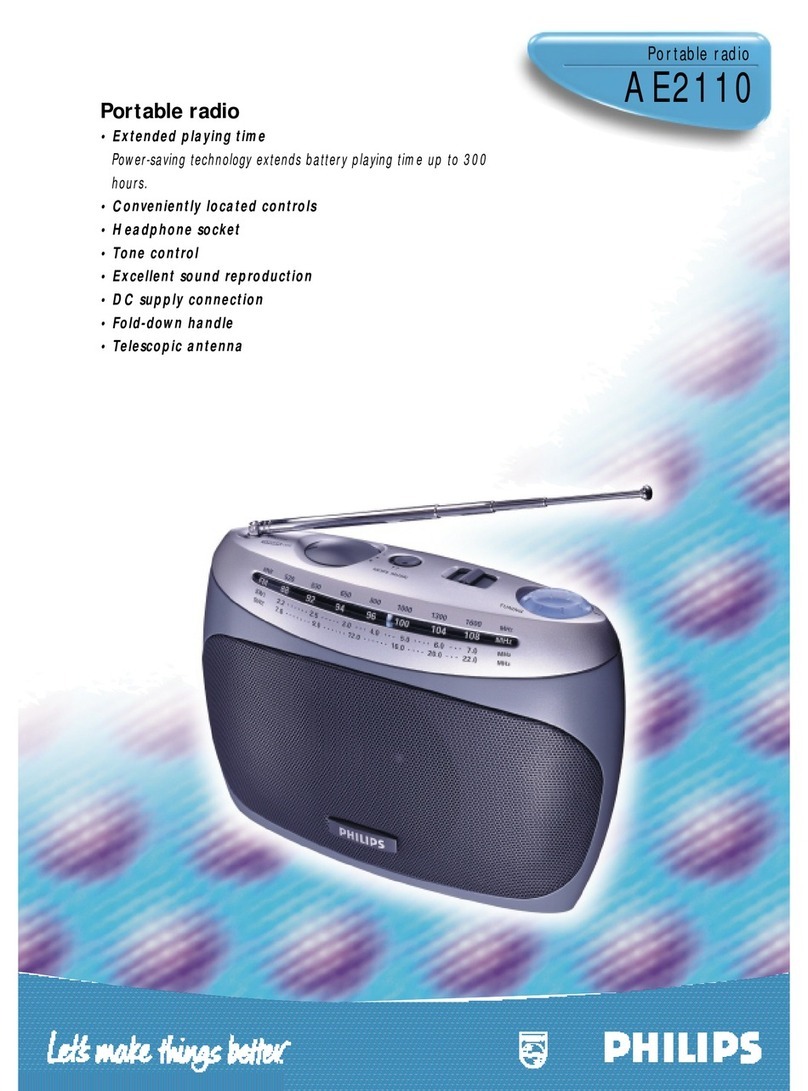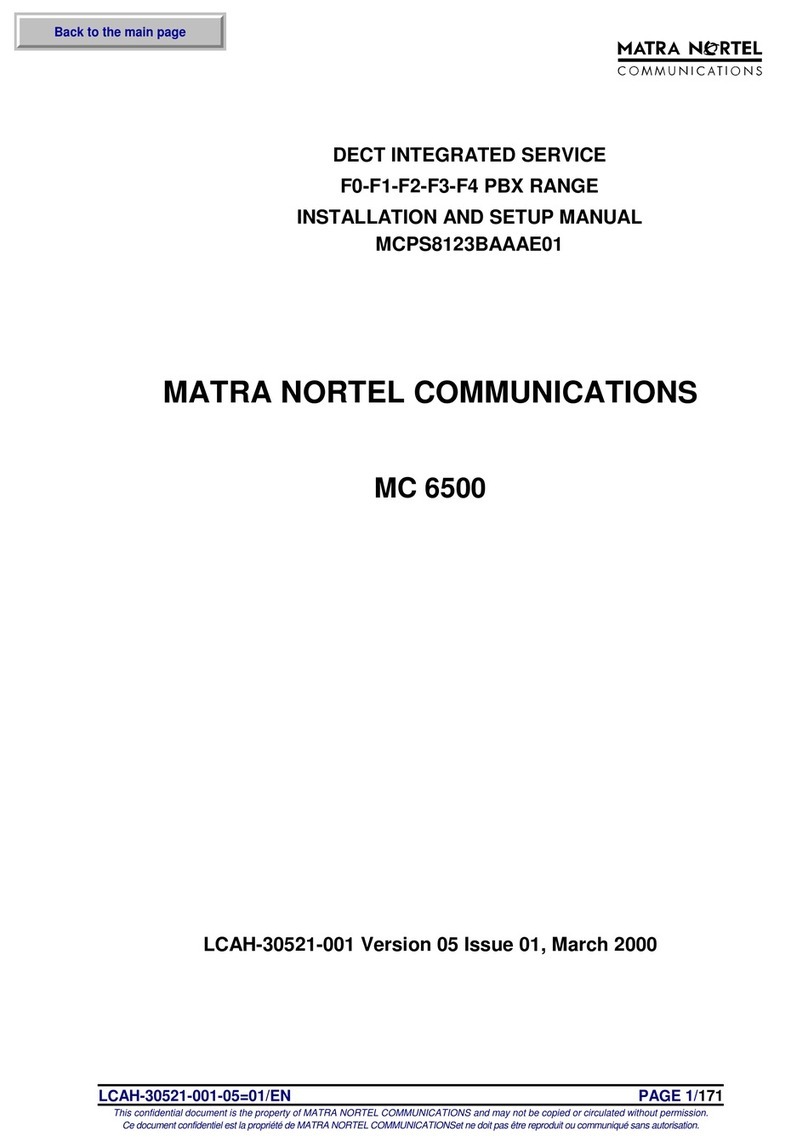
REVISION HISTORY
REV DATE DESCRIPTION
R1A Mar 2003 Initial release
R2A Jun 2003 Added UHF—H (4W) and P25 functionality
R3A Feb 2004 Added UHF-L (4W)
D Feb 2004 Added CE Mark and safety symbol conventions
E May 2004 Improved detail in operating instructions
F Jun 2004 Added RU101219V71-V73 coverage.
NOTICE!
This device is a RF transceiver intended for land mobile radio applications. The device
may have use restrictions, which require that the national authority be contacted for
any system licensing requirements, frequency use, allowable power level, etc.
NOTICE!
The software contained in this device is copyrighted by M/A-COM, Inc. Unpublished rights are
reserved under the copyright laws of the United States.
This device is made under license under one or more of the following U.S. Patents: 4,590,473;
4,636,791; 5,148,482; 5,185,796; 5,271,017; 5,377,229; 4,716,407; 4,972,460; 5,502,767;
5,146,497; 5,164,986; 5,185,795.
The voice coding technology embodied in this product is protected by intellectual property rights
including patent rights, copyrights, and trade secrets of Digital Voice Systems, Inc. The user of
this technology is explicitly prohibited from attempting to decompile, reverse engineer, or
disassemble the Object Code, or in any other way convert the Object Code into human-readable
form.
EDACS is a registered trademark and ProScan, ProSound, and Failsoft are trademarks of M/A-
COM, Inc.
All other product and brand names are trademarks, registered trademarks, or service marks of
their respective holders.
This manual is published by M/A-COM, Inc., without any warranty. Improvements and changes
to this manual necessitated by typographical errors, inaccuracies of current information, or
improvements to programs and/or equipment, may be made by M/A-COM, Inc., at any time and
without notice. Such changes will be incorporated into new editions of this manual. No part of
this manual may be reproduced or transmitted in any form or by any means, electronic or
mechanical, including photocopying and recording, for any purpose, without the express written
permission of M/A-COM, Inc.
Copyright © 2003-2004 M/A-COM, Inc. All rights reserved.
2
